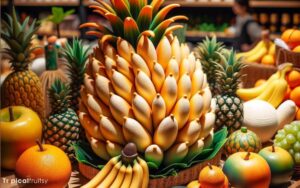Where Do Tropical Fruits Grow? Explained!
Tropical fruits thrive in the warm, humid climates typically found in the tropics, the region between the Tropic of Cancer and the Tropic of Capricorn.
These fruits are cultivated in several regions around the world, including Southeast Asia, Central America, the Caribbean, South America, and parts of Africa.
Conditions in these areas, such as consistent warmth and ample rainfall, create an environment where a diverse array of tropical fruits can flourish, from the durian to the açaí berry.
The growth of tropical fruits is favored by regions with a consistent warm climate, high humidity, and plenty of sunlight.
These conditions are prevalent in the tropics, a band around the Earth situated between two latitudes known as the Tropic of Cancer in the north and the Tropic of Capricorn in the south.
Each tropical region brings its own unique fruits to the global market:
Subtropical regions can also support certain tropical fruits but may face greater climatic challenges.
Discover the lush world of tropical fruits, where regions from Asia to the Americas contribute to a vibrant and flavorful global bounty.
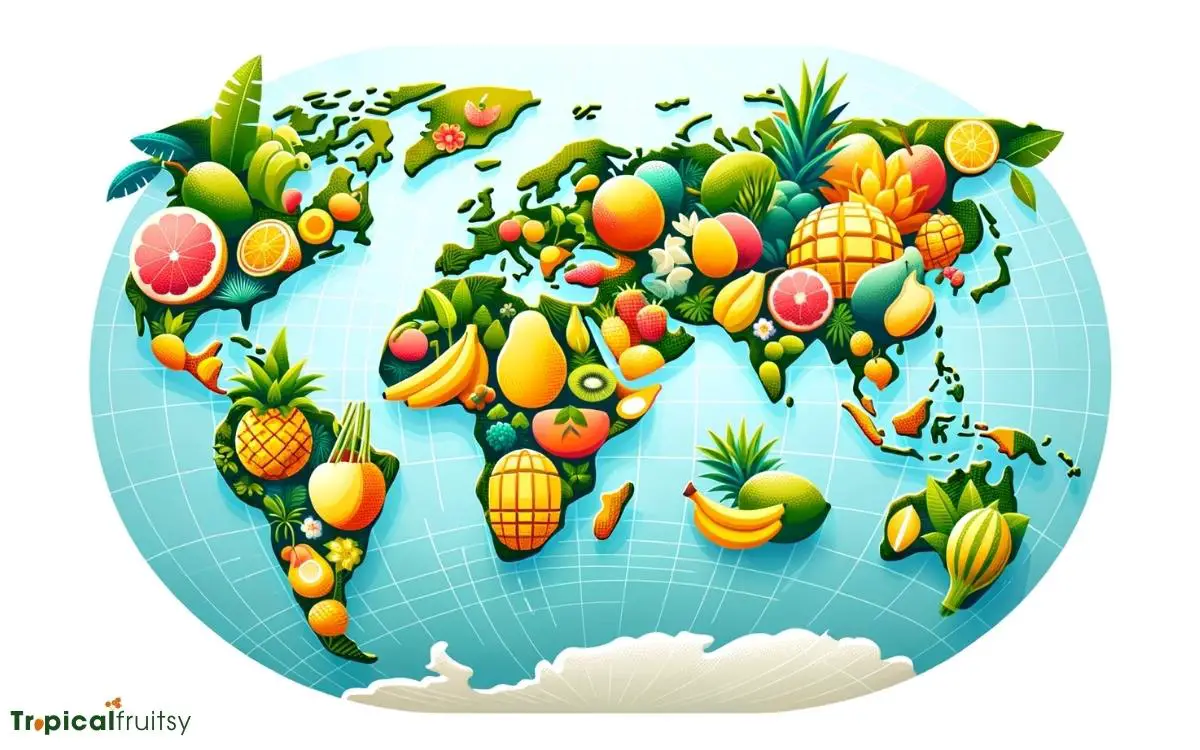
Key Takeaway
Tropical Fruit Regions and Notable Features
| Region | Tropical Fruits | Notable Features |
|---|---|---|
| Southeast Asia | Durians, Rambutans, Lychees | Renowned for a wide variety and unique flavors |
| Central America | Bananas, Pineapples | Significant exporter to global markets |
| The Caribbean | Guavas, Papayas, Passion fruits | Specializes in fruits with rich, distinct tastes |
| South America | Açaí berries, Amazonian cacao | Exotic fruits from dense rainforests |
| Africa | Mangoes, Jackfruits | Tropical climates support a variety of fruit species |
| Subtropics | Various tropical fruits | Can grow tropical fruits with some climatic constraints |
Defining the Tropics

The tropics are defined as the regions of the Earth situated between the Tropic of Cancer and the Tropic of Capricorn.
This belt, approximately 23.5 degrees north and south of the equator, offers a unique climatic zone characterized by consistently high temperatures and substantial rainfall, fostering a year-round growing season.
Tropical fruit cultivation in this zone necessitates an understanding of the intricate interplay between varietal genetics, soil composition, and local weather patterns.
Research in agronomy and plant science continually refines methods to optimize yield and fruit quality, addressing challenges such as pest management, irrigation, and post-harvest storage.
Success in tropical fruit agriculture hinges on adhering to these region-specific agronomic principles, ensuring the sustainable production of diverse, nutritious, and economically significant crops.
Southeast Asia’s Fruit Basket
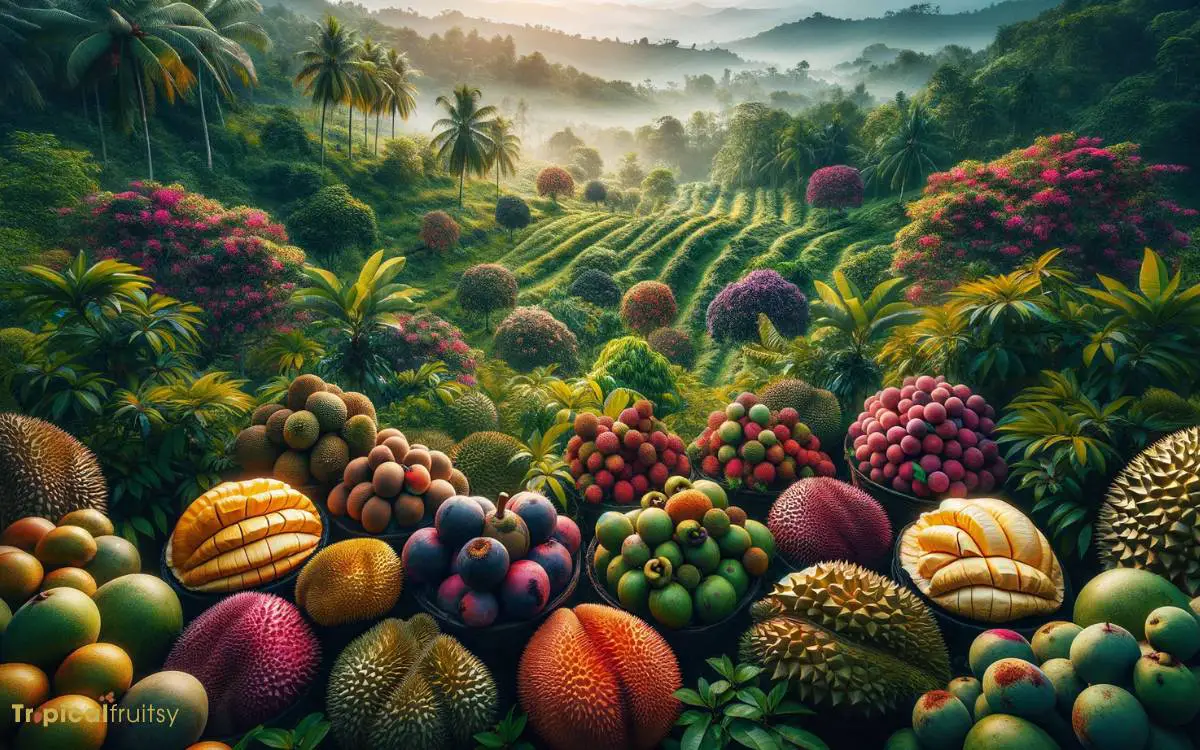
Southeast Asia, encompassing 11 countries, stands as a prolific region for the cultivation of a vast array of tropical fruits, owing to its optimal climatic conditions and fertile soils.
This region’s equatorial climate, characterized by high humidity, abundant rainfall, and warm temperatures throughout the year, creates an ideal environment for fruit species such as Durians, Mangosteens, and Rambutans to thrive.
| Country | Notable Fruit | Unique Growing Condition |
|---|---|---|
| Thailand | Durian | Specific soil composition |
| Philippines | Mango | Intense sunlight exposure |
| Indonesia | Mangosteen | Volcanic soil fertility |
Research has demonstrated that these conditions are not just conducive but essential for the development of the unique flavor profiles and nutritional qualities inherent to these fruits.
For instance, the Durian’s complex composition requires a delicate balance of soil nutrients and consistent climate patterns, which are naturally found in this geographical pocket.
Central America’s Rich Harvests
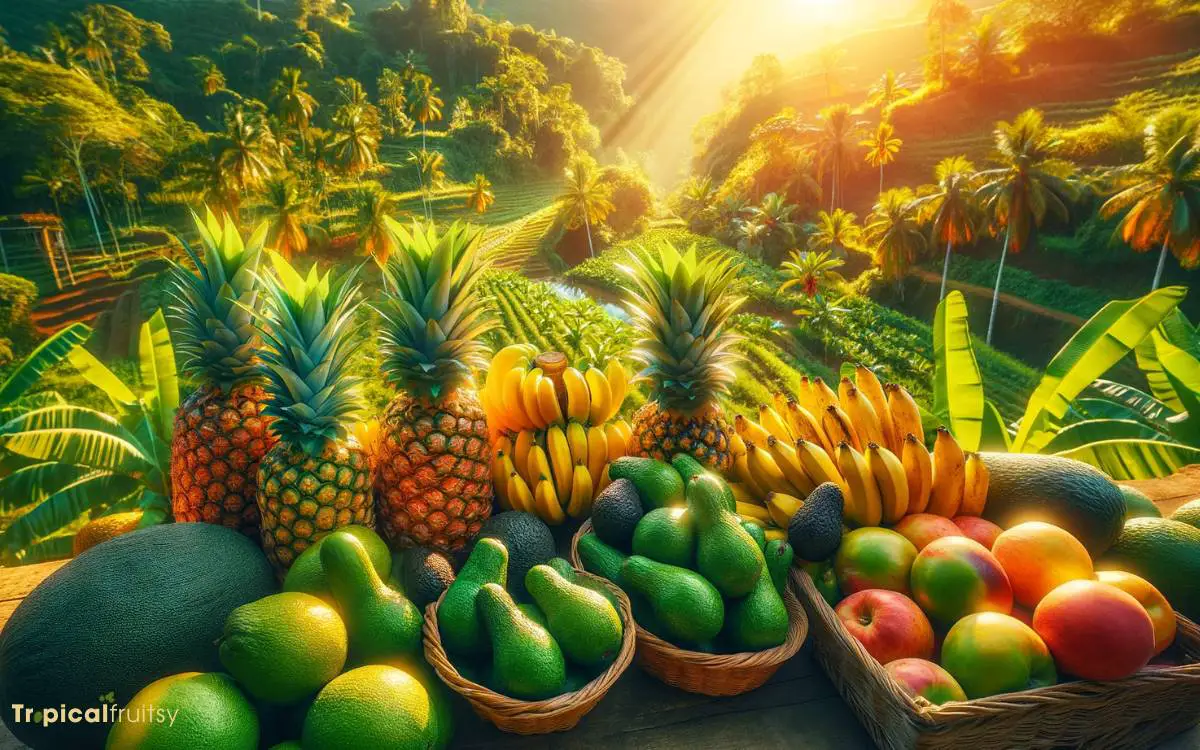
Central America is a region characterized by its tropical climate and fertile soils. It offers optimal conditions for the cultivation of a plethora of fruit varieties.
Research indicates that the consistent rainfall and warm temperatures prevalent in this area are conducive to the growth of crops such as bananas, pineapples, and papayas.
The agricultural practices and genetic diversity within this region play a pivotal role in maintaining the high yield and quality of these fruit harvests.
Diverse Fruit Varieties
Where can one find the most diverse array of tropical fruits that exemplify Central America’s rich agricultural bounty?
This region’s climate, characterized by ample sunlight, rainfall, and fertile soils, creates an ideal environment for cultivating a wide variety of tropical fruits.
Research and crop-specific data have revealed that countries like Costa Rica, Guatemala, and Honduras offer optimal conditions for different species of fruits, each with unique growth requirements.
| Fruit | Country |
|---|---|
| Mango | Guatemala |
| Pineapple | Costa Rica |
| Papaya | Honduras |
Technical agronomic practices, such as microclimate management and soil nutrient analysis, are pivotal in maximizing yield and fruit quality.
Central America’s investment in agrarian research has led to the development of robust, disease-resistant varieties, ensuring a sustainable production that meets the desires of an informed and health-conscious global market.
Ideal Growing Conditions
Optimal growing conditions for tropical fruits in Central America hinge on a combination of high humidity, consistent temperatures, and well-drained, nutrient-rich soils.
Bananas, for instance, demand temperatures ranging from 26°C to 30°C and well-distributed rainfall of at least 100mm per month to prevent stress, which can impede fruit development.
Mangoes require a distinct dry season to promote flowering, followed by ample water during fruit set.
Avocados thrive in temperatures from 15°C to 24°C but are sensitive to frost, necessitating the selection of locales with milder microclimates.
Papayas, on the other hand, are less tolerant of waterlogged conditions and need soils that offer efficient drainage.
Research into local soil compositions and climate patterns is critical for the successful cultivation of these fruits, ensuring that each variety’s specific requirements are met for optimal yield and quality.
Caribbean Island Delicacies
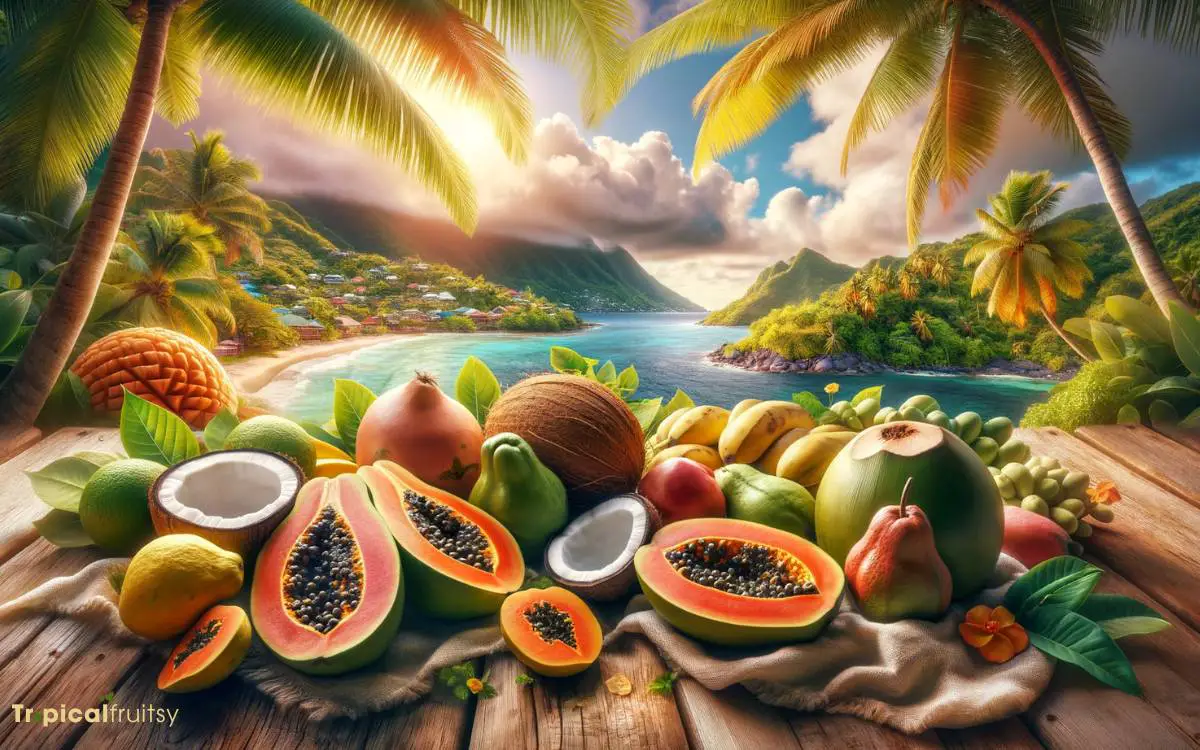
The Caribbean islands are home to an array of indigenous fruit species. These fruits have adapted over time to the region’s unique environmental conditions.
Research into the growth patterns of these fruits indicates that the tropical maritime climate, characterized by ample rainfall and warm temperatures, plays a crucial role in their development and flavor profiles.
Therefore, it is imperative to assess the impact of these climatic conditions on the viability and yield of the fruit crops. This assessment will help optimize cultivation strategies within the islands.
Indigenous Fruit Varieties
Indigenous fruit varieties in the Caribbean islands, such as ackee, soursop, and guava, are integral to the region’s unique food tapestry and grow abundantly in the tropical climate.
Ackee, the national fruit of Jamaica, thrives in the humid weather and requires careful cultivation, as its arils must be harvested only when the fruit’s protective pods open naturally to avoid toxicity.
Soursop, with its distinctive spiky exterior and fibrous, creamy flesh, is cultivated for both its potential health benefits and its versatility in culinary applications.
Guava, rich in vitamin C, proliferates across the Caribbean, owing its robust growth to well-draining soil and ample sunlight.
Research into these indigenous crops emphasizes the importance of sustainable agricultural practices to preserve the biodiversity and cultural heritage of the Caribbean islands.
Climate’s Impact on Growth
Many Caribbean island delicacies, such as ackee, soursop, and guava, owe their lush growth and distinctive flavors to the region’s warm, moist climate, which provides the ideal conditions for these fruits to flourish.
The Caribbean’s tropical maritime climate, characterized by high humidity, ample rainfall, and stable temperatures ranging from 20°C to 30°C, fosters the year-round growth of these fruits.
Research in crop adaptability stresses that constant warmth without extreme temperature fluctuations is crucial for the development of the nuanced flavors and textures unique to Caribbean fruits.
Additionally, well-drained, fertile soils rich in organic matter complement the climatic conditions to enhance fruit quality.
The phenological cycles of these crops are attuned to the region’s natural wet and dry seasons, which dictate flowering and fruiting patterns, further emphasizing the symbiosis between these delicacies and their native environment.
South America’s Rainforest Bounty
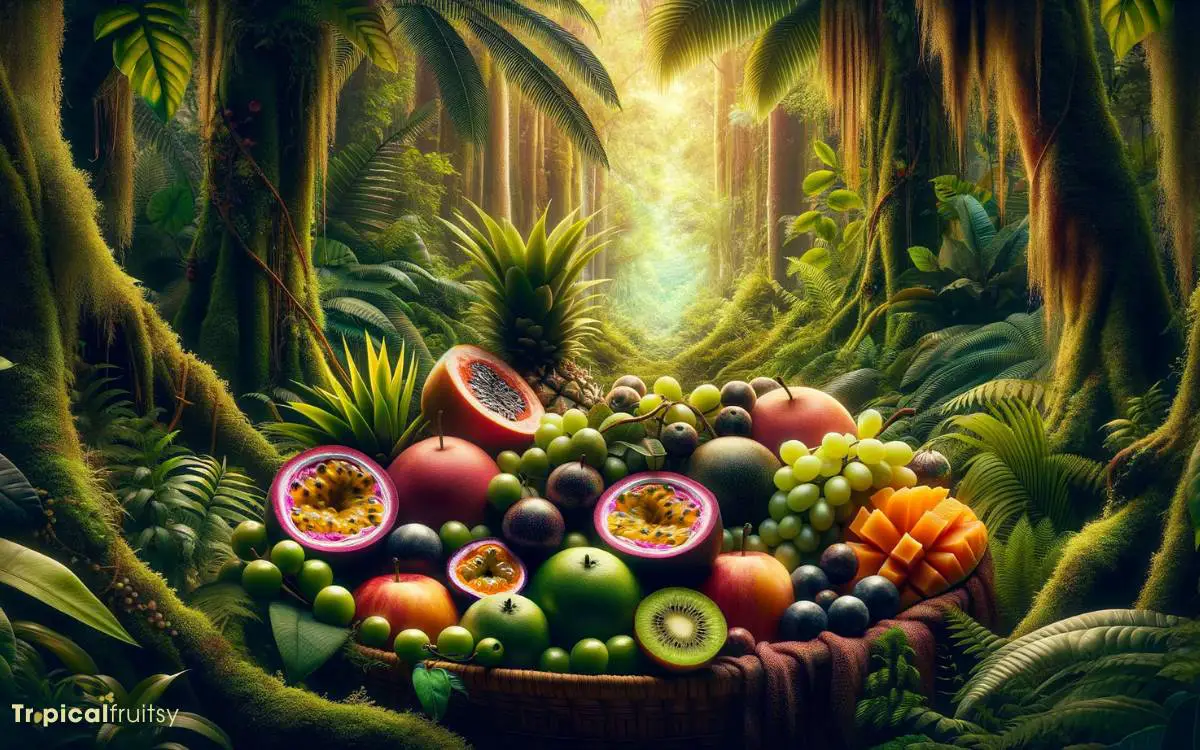
While South America’s vast rainforests are often recognized for their biodiversity, they are also the source of an abundant variety of tropical fruits. These include acai berries, papayas, and guavas.
The acai berry, Euterpe oleracea, thrives in the floodplain areas of the Amazon River. It has gained prominence due to its high antioxidant content.
Research indicates that the optimal conditions for acai cultivation include high humidity, consistent rainfall, and fertile soil with good drainage.
The Carica papaya, commonly known as papaya, prefers the tropical climate provided by the Amazonian basin. Temperature regulation and strategic shading can increase fruit yield.
Additionally, Psidium guajava, or the common guava, is cultivated extensively in South America. It is known for its adaptability to varied soil conditions and resilience to pests. This makes it a viable crop for sustainable agricultural practices in these ecosystems.
Africa’s Tropical Offerings
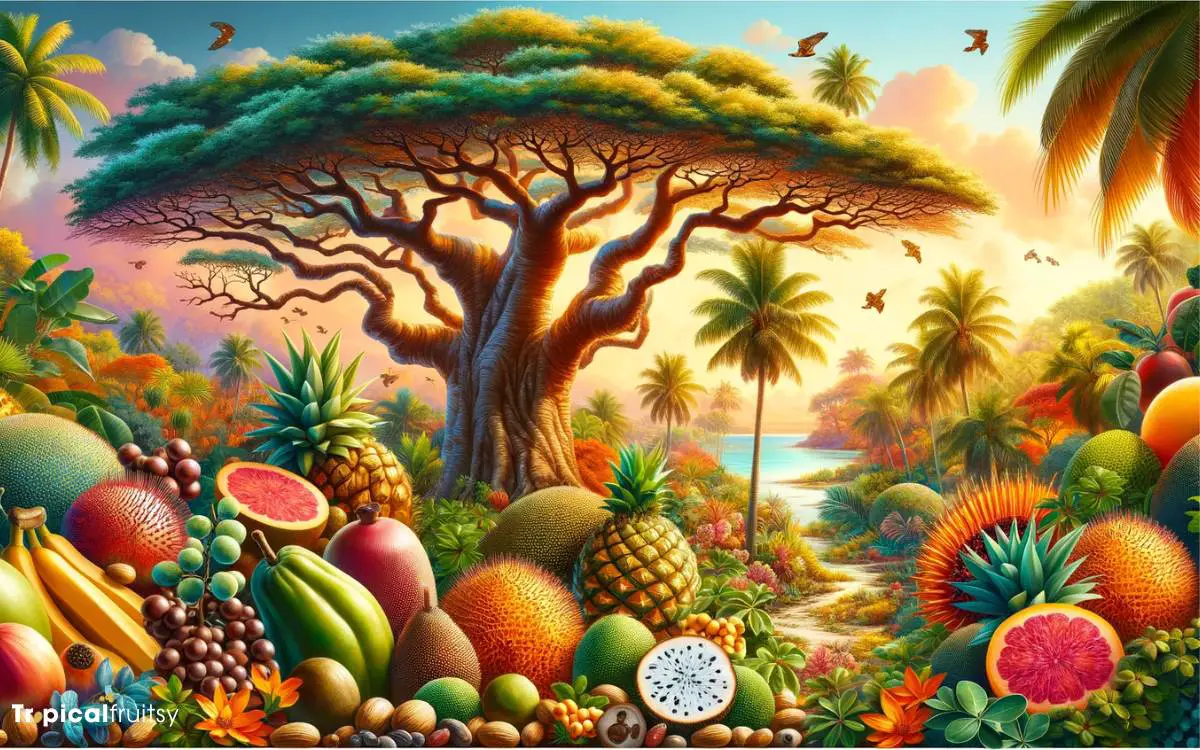
Although less famed than South America’s rainforests, Africa’s diverse climates support the growth of tropical fruits such as mangoes, pineapples, and bananas.
Research indicates that the continent’s tropical and subtropical regions exhibit conditions conducive to horticulture, particularly in countries like Côte d’Ivoire, Ghana, and Uganda.
These areas provide optimal photoperiods, temperature ranges, and soil types for the cultivation of these fruits.
Mangoes (Mangifera indica), for example, thrive in well-drained, ferruginous tropical soils and require a dry period for flowering.
Pineapples (Ananas comosus) demand slightly acidic soils, consistent warmth, and controlled irrigation. Bananas (Musa spp.), being more adaptable, grow in a variety of soils but need ample water and protection from strong winds.
Strategic agricultural practices are employed to maximize yield and fruit quality, adapting to each crop’s specific ecological demands.
Cultivation in Subtropical Regions
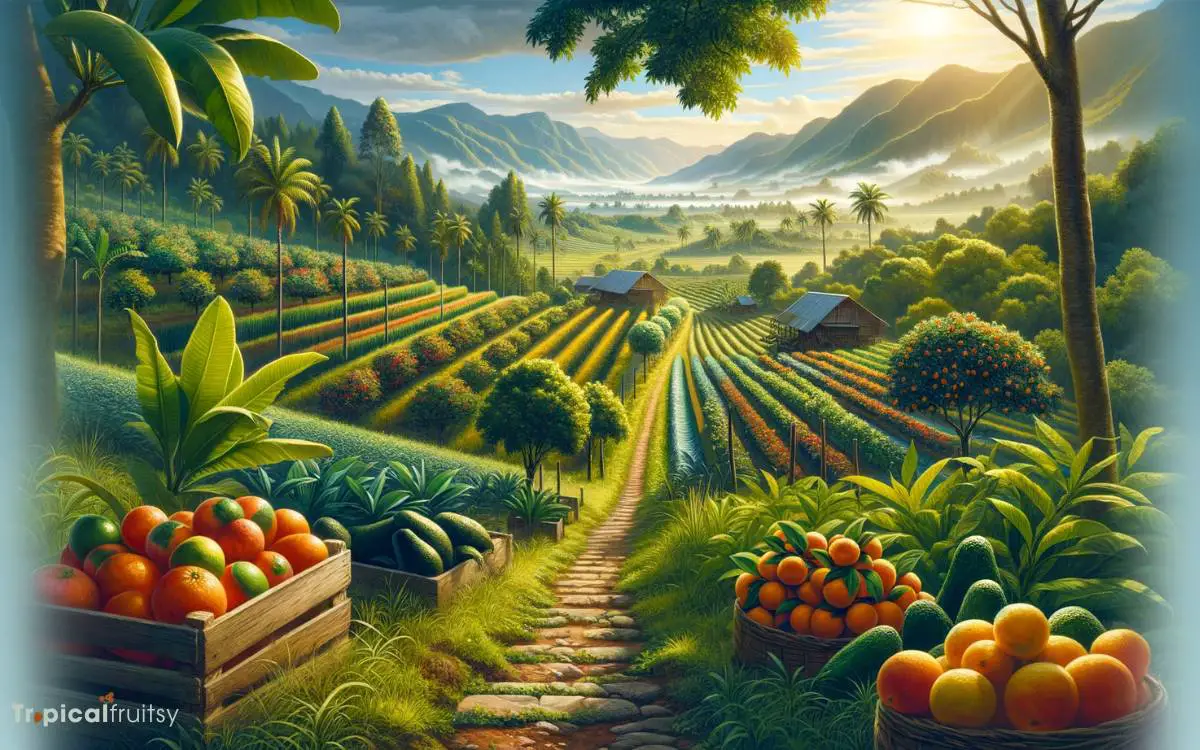
Subtropical regions offer a unique set of climatic conditions that allow for the successful cultivation of certain tropical fruits like avocados, lychees, and citrus varieties.
These areas are characterized by warm, humid summers and mild winters, which are conducive to growing fruits that require a certain threshold of heat units but can withstand brief periods of cooler temperatures.
To paint a picture for the audience:
- Avocados thrive in regions with well-drained soils and moderate humidity, where temperatures rarely drop below freezing.
- Lychees demand high summer heat, ample moisture, and well-drained acidic soils, becoming increasingly popular in subtropical areas with such conditions.
- Citrus varieties, including oranges, lemons, and grapefruits, are versatile but require frost-free periods and benefit from the subtropical zones’ distinct, mild winter chill for fruit set.
These fruits’ cultivation is a meticulous process that integrates climatic analysis, soil preparation, and careful selection of cultivars suited to the specific conditions of subtropical regions.
Can I Grow Tropical Fruits in Non-Tropical Climate?
Yes, it is possible to grow tropical fruits in non-tropical climates through careful management of temperature, humidity, and light conditions. While it may require some extra effort and resources, advancements in technology have made tropical fruit and vegetable production feasible in various regions with different climatic conditions.
Challenges in Tropical Fruit Farming

Despite the adaptability of tropical fruits to warm climates, many farmers face considerable challenges. These challenges include pest infestations, extreme weather events, and market accessibility issues.
Pest outbreaks, such as the Mediterranean fruit fly, pose risks to crops like mangoes and papayas. This necessitates vigilant monitoring and integrated pest management strategies.
Climate change exacerbates extreme weather patterns, leading to unpredictable rainfall and temperature fluctuations. These fluctuations stress plants and may disrupt pollination cycles and fruit set in species such as durian and lychee.
Moreover, market accessibility remains a hurdle for farmers. Infrastructure deficiencies and export regulations often limit their ability to reach profitable markets.
As such, agronomic research focuses on developing resilient crop varieties and devising sustainable farming practices to mitigate these adversities.
Conclusion
The cultivation of tropical fruits represents a diverse agricultural practice that spans the equatorial belt, offering a cornucopia of flavorful and nutritious produce.
Despite the challenges such as pest management, climate change, and market access, the perseverance of growers continues to sustain the global demand.
As the golden apples of the Hesperides in ancient lore, these fruits remain treasures of the modern world, nurtured within the fertile tropics and subtropics, enriching diets worldwide.





